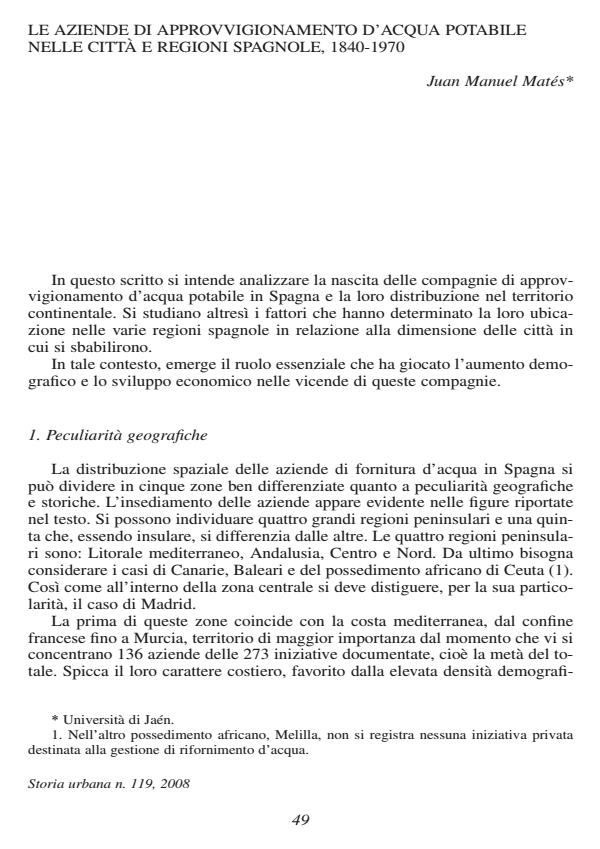Le aziende di approvvigionamento d'acqua potabile nelle città e regioni spagnole, 1840-1970
Journal title STORIA URBANA
Author/s Juan Manuel Matés
Publishing Year 2009 Issue 2008/119
Language Italian Pages 26 P. 49-74 File size 845 KB
DOI 10.3280/SU2008-119004
DOI is like a bar code for intellectual property: to have more infomation
click here
Below, you can see the article first page
If you want to buy this article in PDF format, you can do it, following the instructions to buy download credits

FrancoAngeli is member of Publishers International Linking Association, Inc (PILA), a not-for-profit association which run the CrossRef service enabling links to and from online scholarly content.
Drinking water supply companies in Spain (1840-1970): cities and geographical distribution - The aim of the paper is to analyze the appearance of drinking water supply companies in Spain, and their geographical distribution in the peninsula. We also attempt to study the factors that have brought about their location in the different regions, as well as the size of the cities in which they were established. In this context, particular attention will be paid to the role of population growth and economic development as key issues in the setting up of the above-mentioned firms. After a brief introduction, we will provide a description of the regional division in the peninsula at the time, from both geographical and economic-historical perspectives. This division enables us to make comparisons between the different regions concerning the level of introduction of drinking water services controlled by private companies. The differences between developed and backward areas of the country are evident. The size and the rate of growth of the cities are relevant issues in this sense, and are discussed in the following paragraphs. We will finally draw some succinct conclusions, which illustrate the significant relationship between the regions with rapid urban and industrial growth, and the setting up of drinking water supply companies.
Juan Manuel Matés, Le aziende di approvvigionamento d'acqua potabile nelle città e regioni spagnole, 1840-1970 in "STORIA URBANA " 119/2008, pp 49-74, DOI: 10.3280/SU2008-119004